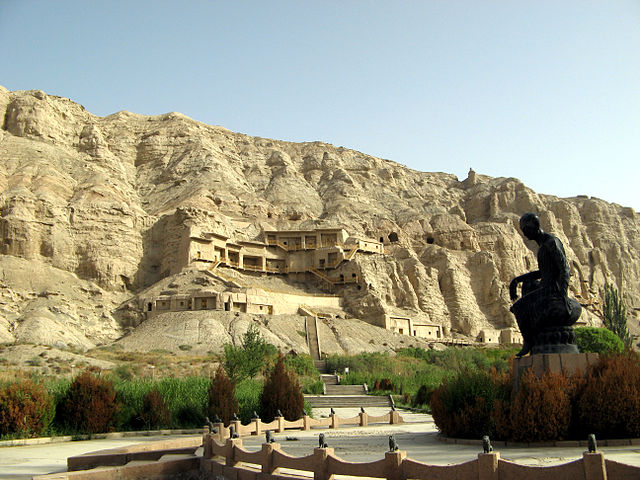
Thousand-Buddha Caves
Kizil, Xinjiang
The Buddhist grottoes in Kizil date from about 300 AD -700 AD. Their early origin is a recent result that is based on carbon-14 dating. The caves display Indian/Gandharan and Iranian, rather than Chinese, styles in their artwork. Kizil's 200+ grottoes form the second-largest collection of cave-chapel art in the region, Dunhuang being the largest. Significant paint remains today (2007), although all Kizil's once-abundant clay images have by now been either destroyed or removed by a combination of erosion, flooding, and Muslim and European interference with the site.
A modern statue of Kumarajiva (344-414) appears at photo right. The great translator/monk was born in Kuqa, 70km (43mi) to the east.


